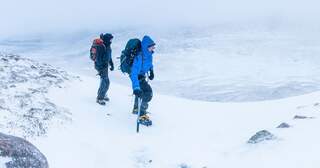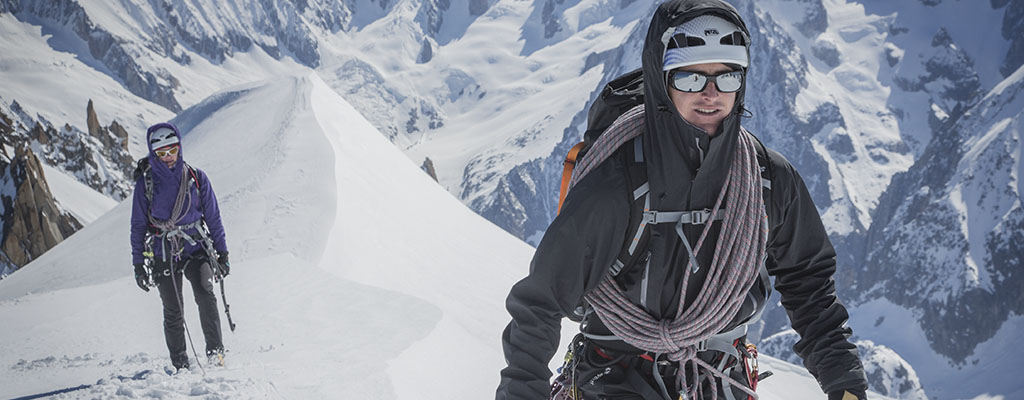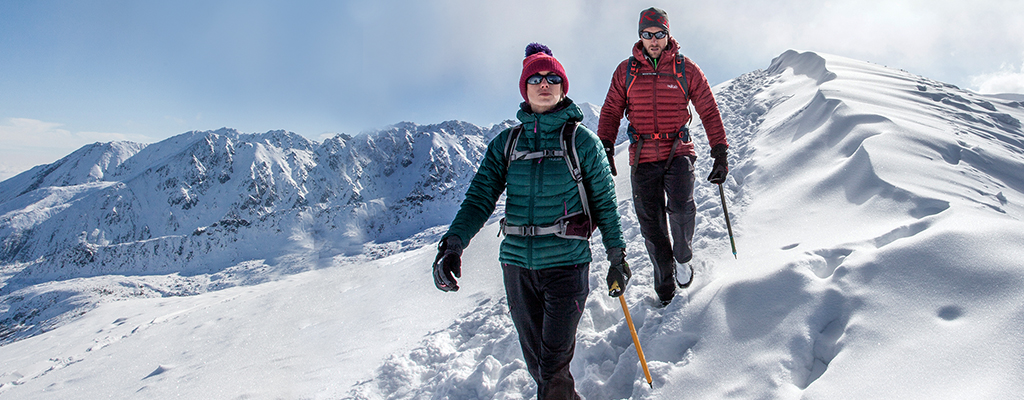Mountaineering is one of those adventures that stays with you for a lifetime. The thrill of reaching a summit, the camaraderie with your climbing partners, and the raw beauty of the mountains-it’s all unforgettable. But let’s be honest: the mountains can also be tough, unpredictable, and sometimes downright dangerous. That’s why having the right kit isn’t just a good idea-it’s essential.
What is Mountaineering?
Mountaineering is about more than just climbing a mountain. It’s a blend of hiking, scrambling, climbing, and sometimes even skiing, all with the goal of reaching a summit. It can be as simple as a walk up a snowy hill or as technical as scaling an icy ridge. The one thing all mountaineers have in common? A love for adventure-and a deep respect for the mountains.

Mountaineering Kit List
Let’s break down the essential gear you’ll need, with tips on how to choose the right kit for your adventure.
1. Boots
Your boots are arguably the most important bit of kit you’ll own. They need to be warm, waterproof, and compatible with crampons.
- Mountaineering Boots → Look for boots rated B1, B2, or B3. B1 is fine for easier summer routes, but for winter or technical climbs, you’ll want B2 or B3 boots. Make sure they fit well-blisters can ruin a trip!
- Top Tip → Try boots on with the socks you’ll wear in the mountains, and walk around the shop (or your house) to check for pressure points.

B1 – More solid than low-level walking boots, B1 boots are all-round four season walking boots ideal for lightweight winter hillwalking. They combine with C1 strap-on crampons, and B1/C1 boot/crampon combinations, which are adequate for many UK winter fell walks and gentle snow plods.
B2 – Stiffer and more rigid for winter mountaineering, these are best suited for regular winter hill walkers, tackling long days in snowy conditions. There will be a heel ledge to allow fitting of a C2 or C3 crampon for the most secure fit and versatile performance.
B2 boots are ideal for low to mid-grade climbs in Scottish winter conditions, bagging Munroes in winter, as well as the summer alpinist.


B3 – These fully rigid climbing boots are designed for high-level winter mountaineering and technical mixed and ice climbing.
B3 boots have the stiffest soles and uppers available, giving solid lateral and medial support for front pointing, step-kicking, and traversing on steep terrain. Heel and toe ledges allow the fitting of C3 crampons to take advantage of the easy step-in attachment system of heel clip and toe bar.
2. Crampons
Crampons are metal spikes that attach to your boots, giving you grip on ice and hard snow.
- Choosing Crampons → Make sure they match your boot’s rating. Strap-on crampons fit most boots, but step-in or hybrid crampons are best for technical climbs.
- Don’t Forget → Always practice putting them on and off before you hit the hills.

C1 – Flexible and suitable for UK winter hillwalking and glacier traverses. Compatible with B1, B2 or B3 rated boots.
These crampons have a webbing tape tether that pulls flexible cradles around the heel and toe to create a secure binding. They are usually a lower profile 10-point crampon, with less aggressive points.
C2 – Suitable for technical winter scrambles, winter climbing and alpinism. Compatible with B2 and B3 rated boots.
This type of crampon uses a plastic heel lever and a flexible toe cradle to create a secure binding to B2 or B3 boots and tend to be mid-profile with longer secondary spikes and sharper front points.


C3 – Stiffer with longer, more aggressive spikes, these crampons are suitable for ice climbing and technical mountaineering. Compatible with B3 type boots only.
High-end crampons for high-end boots, these crampons combine a plastic heel lever and a step-in system that gives a solid fit and offers precise performance on steep ice climbs or highly technical mixed routes.

3. Ice Axes
An ice axe isn’t just for climbing-it’s also a vital safety tool for self-arrest if you slip.
- General Mountaineering Axes → Great for walking and basic climbing.
- Technical Ice Tools → Needed for steeper, more technical routes.
- How to Choose → The axe should reach your ankle when held at your side..

Walking Axe
- Used to stop you falling, supports you when walking.
- Straight shaft, nearly straight pick
- Longer handle
Straight shafted walking axes are a good choice for winter Munro bagging, Welsh or Lake District fell walking, alpine glacier crossings and non-technical snow ascents.
Mountaineering Axe
- Adaptable across a range of walking, mountaineering and low to mid-grade climbing routes
- Shorter, straight lower shaft with slightly curved upper shaft
- Reversed pick less than 90° to handle
These axes cover the broad spectrum of mountaineering that lies between snowy walking and full-on technical climbing. Suitable for Scottish winter mountaineering up to grade II or III or alpine routes to around grade AD.


Technical Axe
- Ideal for steep climbing on snow and ice
- Bent or curved shaft
- Longer handle
As well as clearing obstacles, the curved shaft allows you to present the pick to the ice at an ideal angle for stable placements, making winter ice climbs easier.
4. Helmets
Mountaineering helmets are designed to protect your head from two main dangers: falling debris (like rocks or ice) and direct impacts from slips or falls. Unlike industrial helmets, which are built for different hazards, mountaineering helmets must meet the EN 12492 safety standard, ensuring they offer proper protection for climbing and mountain environments
Features to Look For → Lightweight, well-ventilated, and comfortable enough to wear all day.
5. Jackets
Your outer jacket is potentially the most important piece of kit you will invest in as this will be your protective layer against the elements. It will keep you comfortable whilst keeping the rain, snow and wind out. When mountaineering, quality fabric is the first thing you should consider. It should be highly waterproof, breathable and durable, without being too heavy. Look for a jacket with a waterproof rating of 20,000mm or up for protection all day in extreme weather. GORE-TEX Pro fabric, used by many brands, is an example of a fabric that offers an excellent combination of durability and performance. Check out our Waterproof Buying Guide for more info.
You’ll need at least two jackets: one for protection, one for warmth.
- Hardshell Jacket → Waterproof and windproof, with a helmet-compatible hood.
- Insulated Jacket → Down or synthetic, for warmth during stops or cold weather.
Have a read of our guide on How To Choose An Insulated Jacket for more info.
6. Trousers & Salopettes
Your legs need protection too!
- Mountaineering Trousers → Tough, water-resistant, and flexible.
- Salopettes → Bib-style trousers for extra protection in deep snow or wet conditions.
When you are choosing mountaineering legwear, there are some important features to look for:
- Re-inforced durable knee and seat patches – to avoid scuffs and scratches from rocks and ice.
- Stretchy material or articulated knees for essential freedom of movement.
- Waterproof/windproof fabric – depending on the weather conditions you’ll be facing.
- Kick patches on the ankles – to avoid crampon puncture.
- Braces – for a secure and comfortable fit.
- Full length or ¾ length vented zips for ventilation or comfort breaks.
- Minimal pockets or accessible pockets for when you are wearing a harness.
- Look for a fit that lets you layer thermal leggings underneath in the coldest weather.

7. Gloves & Mitts
Tackling winter conditions can be demanding and exposed areas such as the hands need to be protected to avoid losing body heat - or worse suffering frostbite. Choosing between a glove and a mitt can make all the difference. Or better still, carry both or some spare pairs.

Gloves
- Closer fitting
- More dexterity and versatility
- Suitable for technical winter climbing
Mitts
- Fingerless design makes them warmer than gloves
- Less dexterity
- Suitable for non-technical ascent


Outers And Inners
Outer gloves can be waterproof, insulated and windproof, offering a great deal of protection in alpine conditions. Some gloves come with an outer and an inner removable liner. The inner is constructed from a thin material for extra warmth that can be worn on its own in milder conditions. If your gloves don’t have a removable liner, you might want to invest in a merino wool liner for extra warmth.

8. Technical Kit
This is where things get a bit more specialist.
- Harness → Adjustable for layering over bulky clothes.
- Rope → Dynamic rope for climbing; dry-treated is best for wet conditions.
- Carabiners → A mix of locking and non-locking.
- Belay Device → For abseiling and belaying.
- Prusik Loops & Slings → For rescue and setting up anchors.
- Ice Screws & Snow Anchors → For technical or glacier routes.
9. Accessories & Safety Gear
The little things matter too.
- Backpack → 35–45 litres is ideal for most trips.
- Headtorch → With spare batteries-essential for early starts or emergencies.
- Navigation → Map, compass, GPS (and know how to use them!).
- First Aid Kit → Include blister plasters and a survival blanket.
- Sunglasses/Glacier Glasses → Protect your eyes from snow glare.
- Gaiters → Keep snow and debris out of your boots.
- Trekking Poles → For stability on rough ground.
- Water Bottles/Hydration System → Aim for at least 1.5 litres.
- Snacks → High-energy, easy-to-carry foods.
- Bivvy Bag/Emergency Shelter →Just in case you get stuck.
- Sun Protection → High SPF sunscreen and lip balm.
FAQs
Start with the basics: boots, crampons, ice axe, helmet, harness, rope, belay device, carabiners, headtorch, first aid kit, navigation tools, layered clothing, gloves, sunglasses, and a backpack. Add technical gear as needed for your route.
Pick boots rated for the season and terrain (B1 for summer, B2/B3 for winter or technical climbs). Make sure they fit well-try them on with your mountaineering socks and walk around to check for comfort.
Mountaineering gear is built for harsher conditions and technical terrain. You’ll need crampons, an ice axe, helmet, and more robust clothing compared to regular hiking.
If you’re new to mountaineering or tackling a technical route, a guide is a great idea. They’ll keep you safe, teach you essential skills, and help you get the most out of your trip.
Check the weather, know your route, carry the right kit, and never be afraid to turn back if conditions change. Always let someone know your plans.
Related articles

Let us know you agree to cookies
We use marketing, analytical and functional cookies as well as similar technologies to give you the best experience. Third parties, including social media platforms, often place tracking cookies on our site to show you personalised adverts outside of our website.
We store your cookie preferences for two years and you can edit your preferences via ‘manage cookies’ or through the cookie policy at the bottom of every page. For more information, please see our cookie policy.




